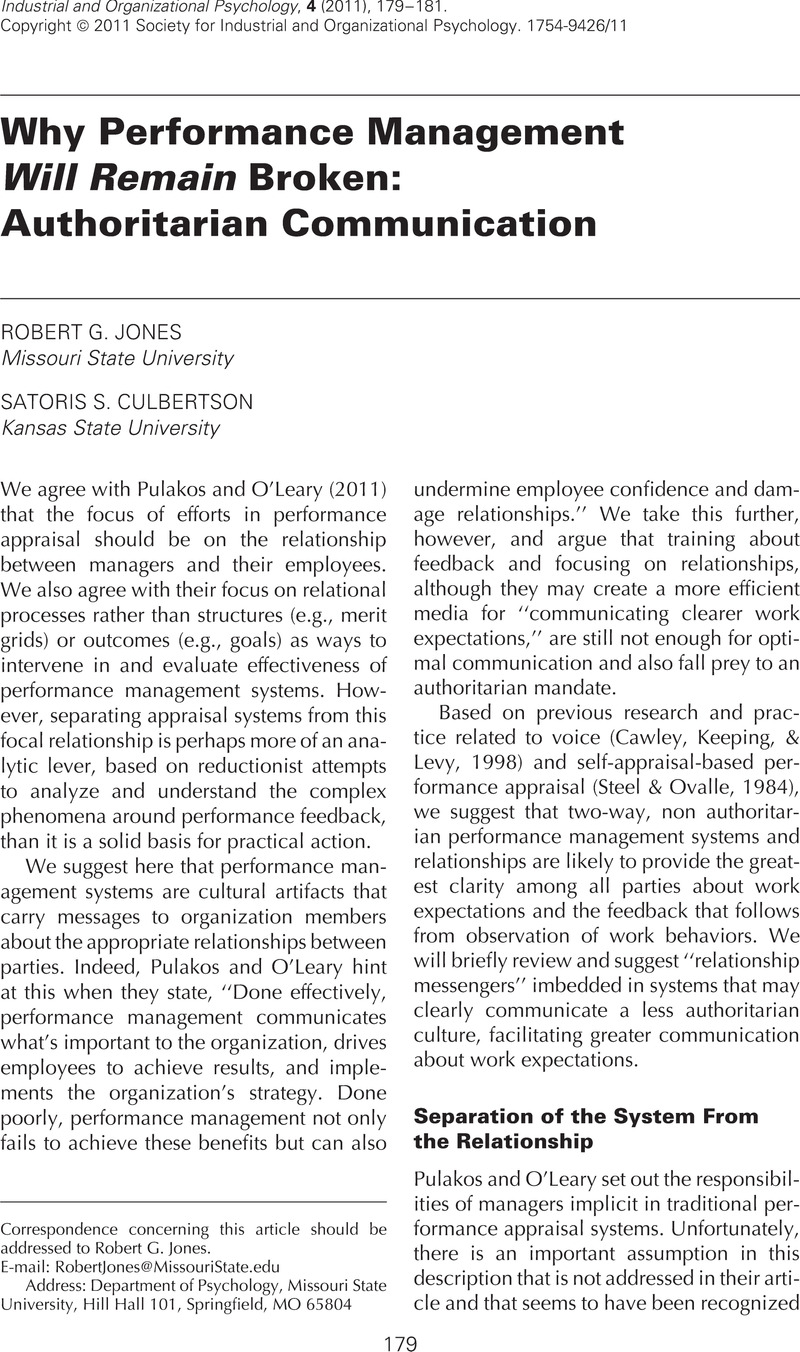Crossref Citations
This article has been cited by the following publications. This list is generated based on data provided by Crossref.
O’LEARY, RYAN S.
and
PULAKOS, ELAINE D.
2011.
Managing Performance Through the Manager-Employee Relationship.
Industrial and Organizational Psychology,
Vol. 4,
Issue. 2,
p.
208.
O’Leary, Ryan S.
and
Pulakos, Elaine D.
2011.
Managing Performance Through the Manager–Employee Relationship.
Industrial and Organizational Psychology,
Vol. 4,
Issue. 2,
p.
208.
Dello Russo, Silvia
Miraglia, Mariella
and
Borgogni, Laura
2017.
Reducing Organizational Politics in Performance Appraisal: The Role of Coaching Leaders for Age-Diverse Employees.
Human Resource Management,
Vol. 56,
Issue. 5,
p.
769.
Levy, Paul E.
Tseng, Steven T.
Rosen, Christopher C.
and
Lueke, Sarah B.
2017.
Research in Personnel and Human Resources Management.
Vol. 35,
Issue. ,
p.
155.
Torneo, Ador R.
and
Mojica, Brian J.
2020.
The Strategic Performance Management System in Selected Philippine National Government Agencies: Assessment and Policy Recommendations.
Asian Politics & Policy,
Vol. 12,
Issue. 3,
p.
432.



